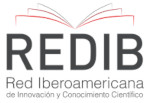Productivity during confinement period: Portugal versus Brazil
Portugal versus Brasil
DOI:
https://doi.org/10.31994/rvs.v13i2.888Keywords:
Working hours, Productivity, Family-Work Conflict, Professional motivation, Confinement periodAbstract
This study aimed to analyze the impact of the number of working hours, the family-work conflict (FWC) and the motivation to start professional tasks on the productivity of employees, in telework regime, during the period of confinement resulting from the pandemic. COVID-19. 339 subjects participated, 60.2% Portuguese and 39.8% Brazilians. Data were collected using the Family-Work Conflict Scale and a set of sociodemographic questions. The results obtained allow us to verify that the number of working hours has a positive impact on productivity and that this relationship is mediated by FWC and motivation to start professional tasks. It was also concluded that this issue deserves special attention from organizations so that they can maintain productivity levels and ensure the motivation of workers, without this negatively affecting the family environment, because teleworking is expected to continue in closer times.
Downloads
References
Abbad, G., Legentil, J., Damascena, M., Miranda, L., Feital, C., & Neiva, E. (2019). Percepções de teletrabalhadores e trabalhadores presenciais sobre desenho do trabalho. Psychology: Organizations and Work Journal, 19(4), 772-780. https://doi.org/10.17652/rpot/2019.4.17501
Alipour, J., Fadinger, H., & Schymik, J. (2020). My home is my castle: The benefits of working from home during a pandemic crisis. Evidence from Germany. University of Bonn and University of Mannheim. http://hdl.handle.net/10419/222850
Baert, S., Lippens, L., Moens, E., Weytjens, J., & Sterkens, P. (2020). The COVID-19 crisis and telework: A research survey on experiences, expectations and hopes. https://www.iza.org/publications/dp/13229/the-covid-19-crisis-and-telework-a-research-survey-on-experiences-expectations-and-hopes
Banco de Portugal (2020). Inquérito Rápido e Excecional às Empresas - COVID-19. https://www.bportugal.pt/sites/default/files/anexos/documentosrelacionados/iree_20200729
BBC (2014). Flexible working rights extended to all. https://www.bbc.com/news/business-28078690
Belzunegui-Eraso, A., & Erro-Garcés, A. (2020). Teleworking in the Context of the Covid-19 Crisis. Sustainability, 12, 3662-3680. https://doi.org/10.3390/su12093662
Bezerra, A., Silva, C., Soares, F., & Silva, J. (2020). Factors associated with people’s behavior in social isolation during the COVID-19 pandemic. Ciência & Saúde Coletiva, 25(1), 2411-2421. https://doi.org/10.1590/1413-81232020256.1.10792020.
Brussevich, M., Dabla-Norris, E., & Khalid, S. (2020). Who will Bear the Brunt of Lockdown Policies? Evidence from Tele-workability Measures Across Countries. IMF Working Paper, WP/20/88, 1-24.
Carillo, K., Cachat-Rosset, G., Marsan, J., Saba, T., & Klarsfeld, A. (2020). Adjusting to epidemic-induced telework: empirical insights from teleworkers in France. European Journal of Information Systems, 29, 1-20. https://doi.org/10.1080/0960085X.2020.1829512
Collewet, M., & Jan Sauermann, J. (2017). Working Hours and Productivity. Labour Economics, 47, 96-106. https://doi.org/10.1016/j.labeco.2017.03.006
Costa, S. (2020). The pandemic and the labor market in Brazil. Brazilian Journal of Public Administration, 54(4), 969-978. http://dx.doi.org/10.1590/0034-761220200170
Crain, T., & Stevens, S. (2018). Family-supportive supervisor behaviors: A review and recommendations for research and practice. Journal of Organizational Behavior, 39(7), 869-888. http://dx.doi.org/10.1002/job.2320
De Clercq, D. (2020). I Can’t Help at Work! My Family Is Driving Me Crazy! How Family-to-Work Conflict Diminishes Change-Oriented Citizenship Behaviors and How Key Resources Disrupt This Link. The Journal of Applied Behavioral Science, 56(2), 166-194. https://doi.org/10.1177/0021886320910558
Despacho nº 3427-B/2020, de 18 de março. Diário da República nº 55 – II Série. Gabinete do Ministro.
Dima, A., Tuclea, C., Vrânceanu, D., & Tigu, G. (2019). Sustainable Social and Individual Implications of Telework: A New Insight into the Romanian Labor Market. Sustainability, 11(13), 1-12. https://www.mdpi.com/2071-1050/11/13/3506/
Direção Geral de Saúde (DGS, 2020). Normas e Circulares Normativas. https://www.dgs.pt/normas-orientacoes-e-informacoes/normas-e-circularesnormativas. aspx
Drumea, C. (2020). Work-related stress and subsequent productivity in a teleworking environment induced by pandemic-related confinement. evidence from the public organizations. Ovidius University Annals: Economic Sciences Series, 20(1), 337-341.
European Comission (2003). Commission Recommendation of 6 May 2003 concerning the definition of micro, small and medium-sized enterprises. https://eur-lex.europa.eu/eli/reco/2003/361/oj
Fisher, J., Languilaire, J., Lawthom, R., Nieuwenhuis, R., Petts, R., Runswick-Cole, K., & Yerkes, M. (2020). Community, work, and family in times of COVID-19. Community Work & Family, 23(3), 247-252. http://dx.doi.org/10.1080/ 13668803.2020.1756568
Fujii, K. (2020). Workplace Motivation: Addressing Telework as a Mechanism for Maintaining Employee Productivity [PhD Thesis]. Portland State University. https://doi.org/10.15760/honors.912
Gálvez, A., Martinez-Argüelles, M., & Pérez, C. (2020). Telework and work-life balance: Some dimensions for organisational change. Journal of Workplace Rights, 16(3). 273-297. http://dx.doi.org/10.2190/WR.16.3-4.b
Golden, T., & Gajendran, R. (2018). Unpacking the role of a telecommuter’s job in their performance: Examining job complexity, problem solving, interdependence, and social support. Journal of Business and Psychology, 34(2),1-15. http://dx.doi.org/10.1007/s10869-018-9530-4
Gorlick, A. (2020), The productivity pitfalls of working from home in the age of COVID-19. https://news.stanford.edu/2020/03/30/productivity-pitfalls-working-home-age-covid-19/
Hair, J., Black, W., Babin, B., Anderson, R., & Tatham, R. (2018). Multivariate Data Analysis. Pearson Prentice Hall.
Instituto Nacional de Estatística (INE, 2011). Classificação Portuguesa das Profissões 2010. Instituto Nacional de Estatística.
Klem, L. (2000). Structural Equation Modeling. In L. Grimm, & Yarnold P. (Ed.), Structural Equation Modeling in Reading and Understanding More Multivariate Statistics (pp. 227-260). APA.
Korabik, K. (2015). The intersection of gender and work-family guilt. In M. Mills (Ed.), Gender and the work-family experience: The intersection of two domains (pp. 141-157). Springer.
Kramer, A., & Kramer, K. (2020). The potential impact of the COVID-19 pandemic on occupational status, work from home, and occupational mobility. Journal of Vocational Behavior, 119, 1-4. http://dx.doi.org/10.1016/j.jvb.2020.103442
Lei n.º 7/2009 de 12 de fevereiro. Diário da República nº 30 – I Série. Assembleia da República.
Lei nº 13.467/2017, de 13 de julho de 2017. Diário Oficial da União. Presidência da República - Casa Civil: Subchefia para Assuntos Jurídicos. http://www.planalto.gov.br/ccivil_03/_ato2015-2018/2017/lei/l13467.htm
Leite, A., & Chambel, M. (2018). O papel da conciliação família trabalho nas empresas. In M. Cunha (Coord.), Desafios à conciliação família trabalho (pp. 22-35). Nova School of Business and Economics
Locke, E., & Schattke, K. (2019). Intrinsic and extrinsic motivation: Time for expansion and clarification. Motivation Science, 5(4), 277-290. http://dx.doi.org/10.1037/mot0000116
Lorando, T., Sapienza, R., & Costa, E. (2020). Qualidade de vida e motivação no trabalho: fator decisivo no desempenho organizacional. Revista Interface Tecnológica, 17(1), 363-375. https://doi.org/10.31510/infa.v17i1.760
Mahmoud, A., Fuxman, L., Mohr, I., Reisel, W., & Grigoriou, N. (2020). We aren’t your reincarnation! Workplace motivation across X, Y and Z generations. International Journal of Manpower, 41, 1-17. https://doi.org/10.1108/ijm-09-2019-0448
Marôco, J. (2014a). Análise estatística com o SPSS Statistics. Report Number.
Marôco, J. (2014b). Análise de equações estruturais: fundamentos teóricos, software e aplicações. Report Number.
McKersie, S., Matthews, R., Smith, C., Barratt, C., & Hill, R. (2019). A process model linking family-supportive supervision to employee creativity. Journal of Occupational and Organizational Psychology, 92(4), 707-735. https://doi.org/10.1111/joop.12276
Mello, A., & Dal Colletto, A. (2019). Telework and its effects in Brazil. In J. Messenger (Ed.), Telework in the 21st Century: An Evolutionary Perspective (pp. 211-254). International Labour Organization.
Messenger, J., Vargas Llave, O., Gschwind, L., Boehmer, S., Vermeylen, G., & Wilkens, M. (2019). Working Anytime, anywhere: The Effects on the World of Work. Eurofund.
Monteiro, C., & Sequeira, A. (2020). O impacto de curto prazo da pandemia de COVID-19 nas empresas portuguesas. https://www.dgert.gov.pt/o-impacto-de-curto-prazo-da-pandemia-de-covid-19-nas-empresas-portuguesas
Morikawa, M. (2020). COVID-19, teleworking, and productivity. https://voxeu.org/article/covid-19-teleworking-and-productivity
Netemeyer, R., Boles, J., & McMurrian. (1996). Development and validation of work-family conflict and family-work conflict scales. Journal of Applied Psychology, 81(4), 400-410. https://doi.org/10.1037/0021-9010.81.4.400
Nguyen, P., Yandi, A., & Mahaputra, M. (2020). Factors that influence employee performance: motivation, leadership, environment, culture organization, work achievement, competence and compensation (a study of human resource management literature studies). Dinasti International Journal of Digital Business Management, 1(4), 645-662. https://doi.org/10.31933/dijdbm.v1i4.389
Organisation for Economic Co-operation and Development (OECD, 2020). Productivity gains from teleworking in the post COVID-19 era: How can public policies make it happen? OECD.
Pancasila, I., Haryono, S., & Sulistyo, B. (2020). Effects of work motivation and leadership toward work satisfaction and employee performance: Evidence from Indonesia. The Journal of Asian Finance, Economics, and Business, 7(6), 387-397. http://dx.doi.org/10.13106/jafeb.2020.vol7.no6.387of-remote-work/
Pestana, M., & Gageiro, J. (2014). Análise de dados para ciências sociais: a complementaridade do SPSS. Sílabo.
Preacher, K. (2020). Calculation for the Sobel Test: An interactive calculation tool for mediation tests. http://quantpsy.org/sobel/sobel.html
República Portuguesa (2020). Comunicados de Conselho de Ministros do XXII Governo. https://www.portugal.gov.pt/pt/gc22/governo/comunicados-do-conselho-de-ministros
Rocha, C., & Amador, F. (2018). O teletrabalho: conceituação e questões para análise. Cadernos Ebape, 16(1), 152-162. http://dx.doi.org/10.1590/1679-395154516
Sembiring, M., Fatihudin, D., Mochklas, M., & Holisin, I. (2020). Banking Employee Performance During Pandemic Covid-19: Remuneration and Motivation. Journal of Xi'an University of Architecture & Technology, 12(7), 64-71. https://doi.org/10.37896/JXAT12.07/2304
Silva, A., & Silva, R. (2019). A motivação no ambiente organizacional. Revista Innovare, 28, 1-12.
Sinha, C., & Ahmad, A. (2020). Employees’ Work Motivation during COVID–19 Outbreaks: A Comparative Study of Missionary and Govt. Schools. Saudi Journal of Humanities and Social Sciences, 5(10), 547-554. https://doi.org/10.36348/sjhss.2020.v05i10.006
Soomro, A., Breitenecker, R., & Shah, S. (2018). Relation of worklife balance, work-family conflict, and family-work conflict with the employee performance-moderating role of job satisfaction. South Asian Journal of Business Studies, 7(1),129-146. https://doi.org/10.1108/SAJBS-02-2017-0018
Steiger, J. (2000). Point estimation, hypothesis testing, and interval estimation using the RMSEA: some comments and a reply to Hayduck and Glaser. Structural Equation Modeling, 7(2), 149-162. https://doi.org/10.1207/S15328007SEM0702_1
Tavares, F., Santos, E., Diogo, A., & Ratten, V. (2020). Teleworking in portuguese communities during the COVID-19 pandemic. Journal of Enterprising Communities: People and Places in the Global Economy, 14, 1-16. https://doi.org/10.1108/JEC-06-2020-0113
Thulin, E., Vilhelmson, B., & Johansson, M. (2019). New Telework, Time Pressure, and Time Use Control in Everyday Life. Sustainability, 11(11), 1-17. http://dx.doi.org/10.3390/su11113067
Vaziri, H., Casper, W., Wayne, J., & Matthews, R. (2020). Changes to the Work-Family Interface During the COVID-19 Pandemic: Examining Predictors and Implications Using Latent Transition Analysis. Journal of Applied Psychology, 105(10), 1073-1087. http://dx.doi.org/10.1037/apl0000819
Wolor, C., Solikhah, Susita, D, & Martono, S. (2020). How to Maintain Employee Motivation Amid the Covid-19 Virus Pandemic. International Journal of Economics and Business Administration, 8(4), 78-86. https://www.ijeba.com/journal/570/download
Zhang, M., Griffeth, R., & Fried, D. (2012). Work-family conflict and individual consequences. Journal of Managerial Psychology, 27(7), 696-713. http://dx.doi.org/10. 1108/02683941211259520
Downloads
Published
How to Cite
Issue
Section
License
Copyright (c) 2022 Revista Vianna Sapiens

This work is licensed under a Creative Commons Attribution-NonCommercial 4.0 International License.











